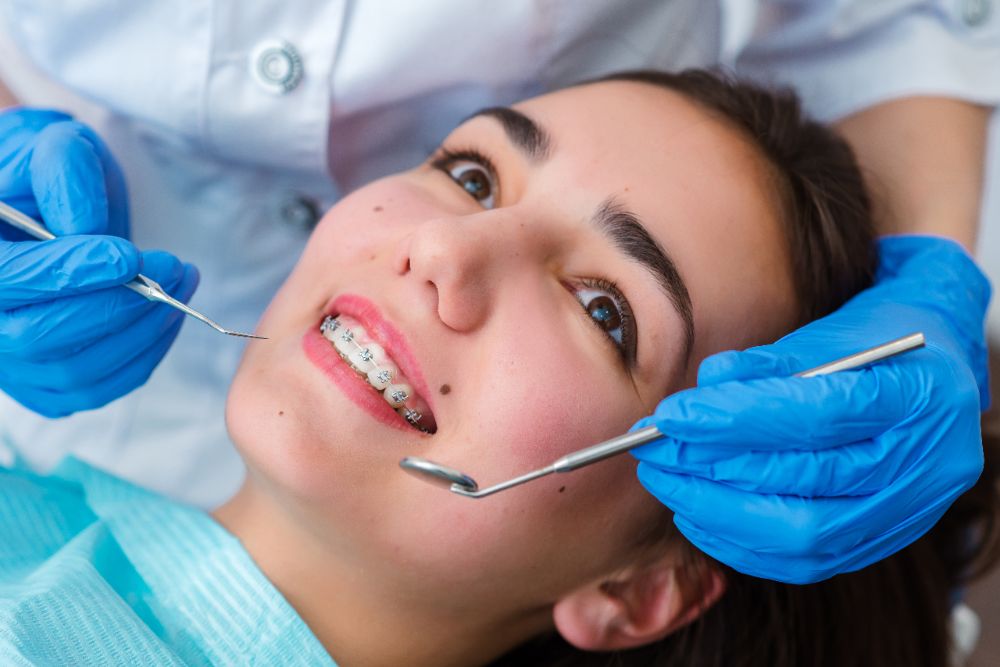How Cumming Orthodontics Addresses Common Braces and Invisalign Concerns
Wiki Article
Comprehensive Guide to Orthodontics Procedures for Correcting Oral Misalignments
In the world of orthodontics, the journey to attaining a completely lined up smile includes a myriad of procedures customized to remedy dental misalignments. From traditional dental braces to unseen aligners and even medical choices, the area of orthodontics supplies a variety of options to resolve differing levels of dental abnormalities. Understanding the ins and outs of each treatment, including their mechanisms, benefits, and prospective disadvantages, is vital in making notified decisions concerning one's orthodontic therapy. As we navigate with the detailed guide to orthodontic procedures for remedying dental imbalances, the intricate information of each technique will certainly unfold, shedding light on the path towards a harmonious and useful oral placement.Orthodontic Procedures Introduction

Along with standard braces and clear aligners, orthodontists may likewise recommend various other treatments like headwear, palatal expanders, or retainers to resolve details alignment issues (aligners). These procedures are customized to every person's one-of-a-kind requirements and might involve a mix of therapies to accomplish the desired results. Normal changes and surveillance are essential components of orthodontic therapy to ensure progress gets on track and to make any kind of needed alterations along the method. By going through orthodontic treatments, clients can not only accomplish a straighter smile yet likewise enhance their total dental health and wellness and function.
Standard Braces: Exactly How They Function
When thinking about orthodontic therapies for dental misalignments, typical dental braces attract attention as a tried and true approach for remedying teeth placing. Traditional dental braces include brackets, cables, and bands that work with each other to apply continuous stress on the teeth, gradually moving them right into the preferred positioning. The braces are connected to the teeth using a special adhesive, and the cables are threaded via the braces. By adjusting the stress of the wires, orthodontists can manage the instructions and force used to each tooth, directing them right into correct placement in time.
As pressure is used to the teeth through the braces, the bone bordering the teeth is reshaped to sustain the new tooth positions. People will certainly need routine changes at the orthodontist's office to make certain the braces continue to use the proper stress for efficient teeth movement.
Unnoticeable Aligners: Disadvantages and pros
These clear, personalized trays are essentially invisible when worn, making them an appealing option for individuals looking for an extra visually pleasing orthodontic therapy. Individuals can remove the aligners before eating or brushing their teeth, reducing the threat of food obtaining stuck in the home appliance and streamlining the cleansing procedure.
Surgical Orthodontic Options
Surgical treatments in orthodontics present sensible choices for dealing with complicated dental imbalances that might not be efficiently settled through traditional orthodontic treatments. While conventional braces and unseen aligners can correct numerous orthodontic issues, certain cases call for surgical treatment to achieve optimum results. Surgical orthodontic choices are commonly recommended for severe malocclusions, considerable jaw inconsistencies, and cases where the underlying bone structure requires adjustment to accomplish correct alignment.One usual medical orthodontic treatment is orthognathic surgical treatment, which includes repositioning the jaws to fix functional concerns such as problem eating or talking. This surgery is typically performed in partnership with an orthodontist who assists straighten the teeth prior to and after the procedure. Surgical orthodontics might likewise include procedures to reveal affected teeth, eliminate excess periodontal tissue, or improve the jawbone to create an extra unified facial profile.
Prior to thinking about surgical orthodontic options, patients go through a detailed assessment to identify the need and prospective advantages of such i was reading this treatments. orthodontics. While surgical procedure may appear daunting, it can significantly boost both the feature and advice aesthetics of the smile in instances where standard orthodontic treatments fail
Retainers and Post-Treatment Care

Post-treatment treatment entails adhering to the orthodontist's directions vigilantly. This may consist of proper oral hygiene practices, attending follow-up appointments, and wearing the retainers as recommended. Failure to conform with post-treatment care guidelines can result in relapse, where the teeth progressively return in the direction of their initial placements. Consistent retainer wear, great oral hygiene, and routine dental check-ups are important for keeping the outcomes attained via orthodontic surgical treatment and making certain the long-lasting stability of the corrected dental positioning.
Final Thought
In final thought, orthodontic procedures provide numerous options for dealing with dental imbalances. Typical dental braces utilize metal brackets and cords to move teeth right into correct dental practice near me positioning. Unnoticeable aligners give an even more very discreet choice yet may not appropriate for all cases. Surgical orthodontic options are available for more extreme imbalances. Retainers are commonly made use of post-treatment to keep the brand-new placement. In general, orthodontic procedures can effectively improve dental health and aesthetic look.As we navigate with the detailed overview to orthodontic treatments for fixing dental misalignments, the intricate details of each technique will unfold, dropping light on the path towards a useful and harmonious oral positioning. - orthodontics
One of the most typical orthodontic treatments is the usage of dental braces, which are composed of steel braces and wires that use mild stress to gradually change teeth right into the desired placement.When thinking about orthodontic treatments for dental misalignments, traditional dental braces stand out as a time-tested technique for dealing with teeth positioning. Furthermore, invisible aligners may not be ideal for intricate orthodontic concerns that call for even more substantial teeth motion, as they are usually suggested for light to moderate instances. Retainers are custom-made orthodontic tools created to hold teeth in their fixed placements after the conclusion of orthodontic treatment.
Report this wiki page